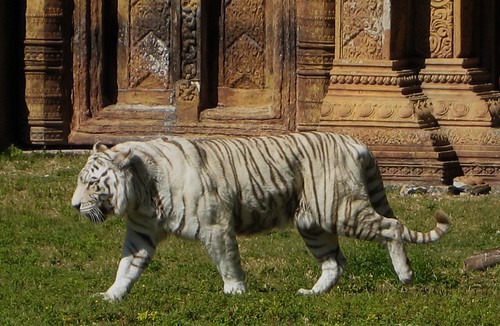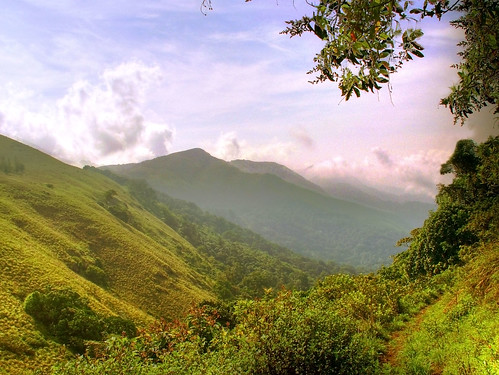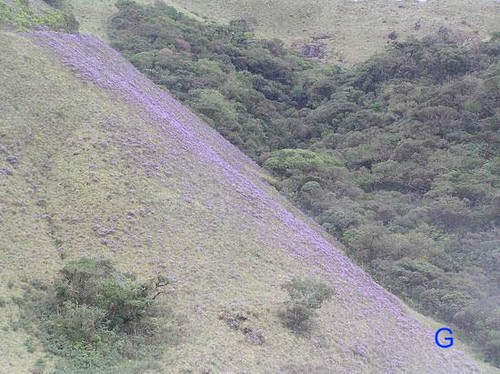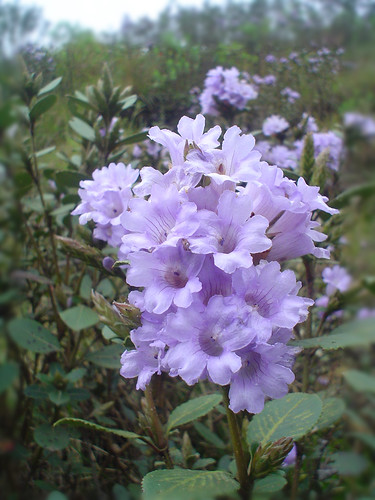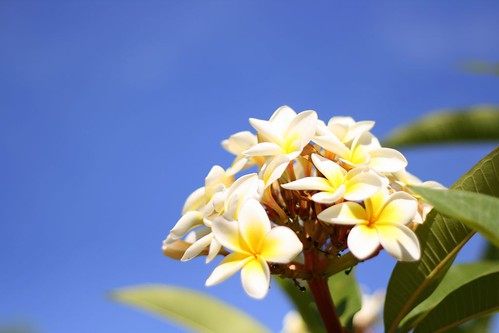Monday, April 26, 2010
Thursday, April 1, 2010
Ficus religiosa (Bodhi Tree or Peepal Tree)
Please take note of the heart-shaped leaves of the Sacred Fig tree, also known as banyan tree and many other names.
Yellow-footed green-pigeon on a fig branch
The yellow-footed green pigeon (Treron phoenicoptera) also known as yellow-legged green pigeon is a common species of green pigeon found in South Asia. The species feeds on fruits of fruit trees including a number of species of Ficus. "While these are pretty common they are rather inconspicuous and most non-birders are not even aware that these exist. There's one little peepul tree (Ficus religiosa) opposite the rooftop, where one or two of these will occasionally stop by to feed on the fruits of the fig tree. Location: Saakshara Apts, Paschim Vihar, New Delhi (July 31, 2009)".
Sunday, March 7, 2010
Monday, February 22, 2010
White Tiger in Miami Metrozoo
Watch this white tiger found in captivity, in Miami MetroZoo, spread over 740 acres (3.0 squire km), is the largest and oldest zoological garden in Florida. It is located in southern unincorporated Miami-Dade County southwest of the city of Miami and west of the village of Palmetto Bay. It houses over 1,200 wild animals and is the only subtropical zoo in the continental United States.
Saturday, February 20, 2010
Sweet pea flowers of Meghalaya
Though the flowers of sweet pea are very beautiful as found in Meghalaya, seeds of many varieties of plants of the genus Lathyrus, including sweet pea, are toxic if eaten in quantity, unlike edible pea. A related pea species, Lathyrus sativus, is grown for human consumption but when it forms a major part of the diet it causes symptoms of toxicity called lathyrism. Sweet pea ingestion, it is believed, causes similar symptoms called odoratism or sweet pea lathyrism due to formation of collagen. The symptoms are similar to scurvy and copper deficiency which share the common feature of inhibiting proper formation of collagen fibrils. Seeds of the sweet pea contain beta-aminopropionitrile that prevents the cross linking of collagen by inhibiting lysyl oxidase, leading to loose skin. Recent experiments have attempted to develop this chemical as a treatment to avoid disfiguring skin contractions after skin grafting.
Saturday, February 13, 2010
Jim Corbett
Photo: Jim Corbett with the slain tiger, Bachelor of Powalgarh
Jim Corbett (Edward James Corbett), born on 25 July 1875 in Nainital in the Indian State of Uttarakhand, was a hunter of Irish ancestry. He was a conservationist, naturalist, photographer and writer famous for killing a large number of man-eating tigers and leopards that had killed people in the villages of the Garhwal and Kumaon regions in India.
According to Wikipedia, though Jim Corbett held the rank of colonel in the British Indian Army and worked for the Bengal and North Western Railway, often he was called upon by the government to slay man-eating tigers and leopards. According to records, between 1907 and 1938 Corbett had shot dead man-eaters such as the Champawat Tiger, the Leopard of Rudraprayag, the Tigers of Chowgarh and the Panar Leopard. These man-eating big cats, 19 tigers and 14 leopards, had killed more than 1200 men, women and children.
As he had great admiration for tigers and leopards, he resolved never to shoot them unless they turned man-eaters or posed threats otherwise. However, by his own account, Corbett had shot the wrong animal at least once, and he greatly regretted the incident. Man-eaters are quite capable of stalking the hunter. So Corbett preferred to hunt alone travelling on foot while pursuing dangerous game. At times, Corbett took dangerous personal risks to save the lives of others.
Corbett was deeply concerned about the fate of tigers and their habitat. So he used to lecture to groups of school children about natural heritage, the need to conserve forests and wildlife. Along with F. W. Champion he played a key role in establishing India's first national park, the Hailey National Park in the Kumaon Hills. Later the park was renamed in his honour as Corbett National Park by the Indian government in 1957.
In 1968, one of the five remaining subspecies of tigers, the Indochinese Tiger, which was also called Corbett's tiger, was named after him as Panthera tigris corbetti. The famous books written by Corbett are: Man-eaters of Kumaon, The Man-eating Leopard of Rudraprayag, My India, Jungle Lore, The Temple Tiger and more man-eaters of Kumaon, Man against man-eaters, and Tree Tops.
After 1947, Corbett and his sister Maggie retired to Nyeri, Kenya, where he continued to write and sound alarm about declining numbers of jungle cats and other wildlife. After retirement, Corbett authored the Man-Eaters of Kumaon, Jungle Lore and other books recounting his hunts and experiences. He also advocated for the protection India's wildlife from extinction.
Jim Corbett died of a heart attack after he finished writing his sixth book Tree Tops, and was buried at St. Peter's Anglican Church in Nyeri.
Saturday, December 20, 2008
Saturday, November 15, 2008
Jog Falls: between heaven and earth
Here is the text added by the original author:
Between Heaven And Earth) بین زمین و بهشت
اگه دست خودم بود تا آخر عمر دور دنیا ولگردی میکردم مخصوصا هندوستان و یکی از باحالترین جاهای هندوستان اینجاست
Jog Falls, India: of all the photos I took there (India), none can describe my true feeling when I was staying there. Easily some of the best days of my life (Uploaded by V.E on 11 Nov 08, 1.49PM PST).
Monday, September 1, 2008
Trekking to Tadiyandamol, Koorg
No tears, dim the sweet look that nature wears: while trekking to Tadiyandamol, Koorg, Karnataka, India.
Friday, July 18, 2008
Thekkady, Periyar Wildlife Sanctuary
The author of this shot adds, "Thekkady is famous for Periyar Wildlife Sanctuary. We were in a boat when this photo was taken".
Monday, June 23, 2008
Neela kurinji and Shola forests
Are you looking for the most authentic, interesting and beautiful photos and images, news, articles, etc., on everything related to India and Indians abroad ? Come back here for more! Now read on...
Neelakurinji 2006
Neelakurinji (Strobilanthes kunthiana) is a bush with several branches. The species name Kunthiana has been derived from the River Kunthi which flows through the rich expanse of the renowned Silent Valley National Park in Kerala, India. It means that the plant has been first described from the vicinity of this river. The plant grows profusely in Shola grasslands and mountain slopes of the mighty Western Ghats and Nilgiris in India. Neelakurinji blooms in a clustered manner on typical inflorescence stocks once in every 12 years. The flowering season ranges between August and November with a peak period of late September and October although some varieties exhibit little variation in their phrenology. The flower has purplish blue colour when aged. It looks light blue in the earlier stage of blooming.
Neela Kurinjee flowers at Munnar
Are you looking for the most authentic, interesting and beautiful photos and images, news, articles, etc., on everything related to India and Indians abroad ? Come back here for more! Now read on...
Reflection
Are you looking for the most authentic, interesting and beautiful photos and images, news, articles, etc., on everything related to India and Indians abroad ? Come back here for more! Now read on...
A Red Hibiscus of Kerala
The author of the photo adds, "The Hibiscus is used as an offering to God Kali and Lord Ganesha in Hindu worship, white hibiscus is considered to have medicinal properties in the Indian traditional system of medicine, Ayurveda. Roots make various decoctions believed to cure various ailments."
Sunday, June 22, 2008
Chempakam (Michelia champaca) Frangipani
Are you looking for the most authentic, interesting and beautiful photos and images, news, articles, etc., on everything related to India and Indians abroad ? Come back here for more! Now read on...
Saturday, June 21, 2008
Red Anthurium
Are you looking for the most authentic, interesting and beautiful photos and images, news, articles, etc., on everything related to India and Indians abroad ? Come back here for more! Now read on...
Pink Anthurium
Are you looking for the most authentic, interesting and beautiful photos and images, news, articles, etc., on everything related to India and Indians abroad ? Come back here for more! Now read on...
Sunday, June 15, 2008
Bird on a Wire !
The white-throated kingfisher (scientific name: Halcyon smyrnensis, also known as the white-breasted kingfisher) is found in many European and Asian countries like Bulgaria, Turkey, India, Philippines, Israel, Egypt, Iraq, Pakistan, Afghanistan, Sri Lanka, China, Taiwan, Indonesia, etc. The population of birds found from Burma to the Greater Sundas are now lumped into fusca subspecies (the photo here shows a pair of fusca).
White-throated Kingfisher is a common species of a variety of habitats, mostly open country in the plains, but has been seen at 7500 ft in the Himalayas with trees, wires or other perches.
The White-throated Kingfisher breeds at the onset of Monsoons. In its courtship display the male perches near the female and spreads out the wings with bill raised high and displaying the white throat and front. Its nest is usually a tunnel (50 cm long or more) in an earth bank. Nest tunnels in a haystack have also been recorded. The eggs take 20 to 22 days to hatch and the chicks fledge in 19 days.




